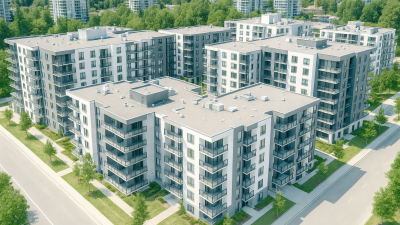The recent Union of the BC Municipalities (UBCM) 2024 housing summit created a critical moment to collectively address British Columbia's acute housing crisis. The summit took place in Vancouver in mid-February and brought together all three levels of government—federal, provincial, and local—to collaborate on solutions.
Keynote speakers included Federal Housing Minister Sean Fraser and BC Housing Minister Ravi Kahlon, underscoring the summit's significance. The event aimed to foster collaboration among government tiers previously operating somewhat independently in housing matters.
Addressing BC's Housing Challenges
One of the major purposes of the summit was to tackle the challenges of implementing new housing legislation introduced in November. These policies were aimed at addressing issues such as shelter spaces, development fees, taxes, levies, and increasing building density.
With BC's population expected to surge by 44% to 7.9 million by 2046, the summit emphasized the urgent need for a cohesive strategy to manage growth and ensure affordable housing, marking a critical step toward addressing the province's housing challenges. In addition to specific initiatives, larger complex ideas were addressed and discussed with a collective aim to move towards more efficient development and increased affordability.
The Feasibility of Aggressive Expansion
There was a clear and collective plea from BC mayors present for more collaborative and thoughtful approaches to tackle the housing crisis, with a special emphasis on the human aspect of housing. The mayors underscored the significant challenges small, rural, and urban communities face in accommodating rapid population growth within the existing and often outdated infrastructure frameworks. A critical point of discussion revolved around the necessity to build between 500,000 to 700,000 housing units by 2030 to achieve affordability levels comparable to those of the early 2000s. This ambitious target underscores the scale of the housing shortage and the urgency to increase supply.
However, BC mayors expressed skepticism about the feasibility of these targets, given the current constraints on infrastructure, workforce availability, and the practicalities of implementing widespread housing developments across diverse communities. The conversation touched upon the workforce shortage in the construction industry, which could hinder the ability to meet the housing production targets. Additionally, the mayors criticized the one-size-fits-all approach of the recent housing legislation, arguing for solutions that better reflect the unique needs and capacities of different municipalities.
Despite these challenges, there was a shared recognition of the urgent need to address the housing crisis. Discussions suggested a desire for more nuanced legislation and support from provincial and federal levels, emphasizing the need for infrastructure upgrades, workforce expansion, and a more inclusive planning process that involves municipalities from the outset.
Infrastructure Challenges Slow Housing Density Implementation
Discussions around infrastructure saw a lot of airtime, revealing a significant gap between provincial housing ambitions and the practical realities faced by municipalities in their capacity to support such growth with adequate infrastructure. Municipal leaders voiced strong frustrations over the lack of financial support and realistic planning for the infrastructure necessary to meet aggressive housing targets.
It was highlighted that the implementation of sweeping housing regulations, including the push for multiplexes on single-family lots, demands substantial investment in essential infrastructure such as transit, schools, and utilities, which many communities find overwhelming due to the associated high costs. For instance, Burnaby Mayor Mike Hurley illustrated the financial strain by noting the million-dollar price tag for every 100 meters of upgrading services from single-family homes converted to four-plex or denser housing.
The provincial government has attempted to alleviate these concerns, including a billion-dollar funding provision that provides infrastructure and amenities grants and legislative changes allowing municipalities to levy more fees from developers. Despite this, local leaders argue these measures are insufficient against the backdrop of global inflation and worker shortages.
The discussion at the summit also touched on the need for a new, consistent funding model to support the infrastructure enabling housing growth, with Federal Housing Minister Sean Fraser indicating openness to exploring creative funding solutions but also emphasizing the need for financial prudence.
Recently, BC Builds, the Province’s new initiative to build more housing for people with middle incomes, announced they will receive and utilize $2 billion in additional financing from the Government of Canada to help deliver thousands more homes for those with middle incomes, a show that both the federal and provincial leaders acknowledge the issues at hand.
Beyond Zoning: Unveiling the Limits and Solutions to Affordability
Conversations around zoning legislation revealed a consensus among local government officials that the affordability issues cannot be solved by zoning changes alone. While the small-scale housing supply could lead to long-term improvements in affordability, it was postured that the days of significantly low rent are over, suggesting a shift in what is considered ‘affordable’ today. It was argued that zoning changes promote attainable ownership options, but they lack the capacity to offer deep affordability on a meaningful scale, contrasting small-scale projects with larger developments that can dedicate a portion to below-market housing. These insights were a recognition of the limitations of zoning legislation as a standalone measure and the critical need for integrated strategies that include both market and non-market solutions to address housing affordability comprehensively.
The dialogue at the summit emphasized the complexities of housing policy, pointing towards the need for innovative, collaborative, and flexible solutions. This led to such suggestions as revising municipal funding models and enhancing transit-oriented development. Despite varying perspectives on responsibility, there was a clear consensus on the necessity of a holistic approach. Moving forward, a unified effort from all government levels is crucial for effective development and enhanced affordability.



